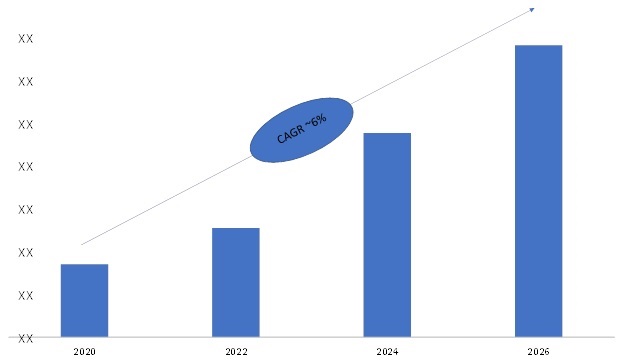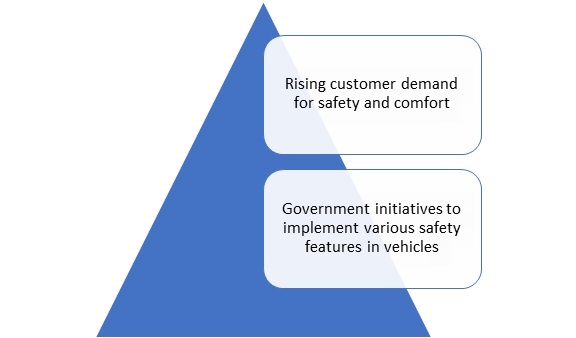Pune, India, November 2020, MRFR Press Release/- Market Research Future has published a Half-Cooked Research Report on the Global Automotive Ultrasonic Sensors Market.
Automotive Ultrasonic Sensors Market Highlights
Sonar refers to navigating and ranging sound. It has been used in cars to help drivers with their driving activities, such as parking and identifying close obstacles. The ultrasonic sensors send out quick ultrasonic impulses reflected by barriers. It then absorbs and processes the echo signals. The major components, the ultrasonic transducer, is inside the plastic case of an ultrasonic sensor. It is made of an aluminum pot with a piezoceramic portion containing a diaphragm. The sensor obtains a wireless transmission signal from the ECU, allowing the aluminum diaphragm to pulsate for around 300μsec with square waves at a resonant frequency of around 48 kHz, resulting in ultrasonic pulse emission. The diaphragm then eases for around 900μsec, in which no transmission is achievable, absorbs the reflected sound from a barrier then vibrates. The piezoceramic part emits these vibrations as analog signals, then amplifies them and transforms them into a digital signal.
Browse In-depth Details [Table of Content, List of Figures, List of Tables] of Automotive Ultrasonic Sensors Market Research Report
Two –four ultrasonic sensors are mounted on the rear bumper to detect an object up to 2 to 2.5 m away in the case of the rear sonar. The distance is transmitted to the driver in real-time using varying buzzer sounds. It can trace even a wire fence if it is close enough.
With regards to cars, the increasing need for ensuring safety while driving is prompting the governments of various countries to implement specific policies for the implementation of different safety features in vehicles, such as blind-spot detection (BSD). These safety features depend on ultrasonic sensors for their functioning, driving the growth of the global automotive ultrasonic sensors market.
Global Automotive Ultrasonic Sensors Market, 2020–2026
Source: MRFR Analysis
In 2019, in Terms of Share, Asia-Pacific Contributed Significantly to the Automotive Ultrasonic Sensors Market: MRFR
Based on region, the automotive ultrasonic sensors market has been segmented into North America, Europe, Asia-Pacific, and the rest of the world. Asia-Pacific is expected to dominate the automotive ultrasonic sensors market in the coming years, which can be attributed to the increasing vehicle production and the presence of prominent players operating in countries in this region. Furthermore, the increasing per capita disposable income levels and rising spending capacity contribute to the growth of the North American and European markets.
The global automotive ultrasonic sensors market has been segmented by type, vehicle autonomy, vehicle type, application, and region. Based on type, the global automotive ultrasonic sensors market can be divided into proximity detection and range measurement. The proximity detection segment is anticipated to grow at a significant CAGR in the coming years. By vehicle autonomy, the global automotive ultrasonic sensors market has been split into semi-autonomous vehicle and fully autonomous vehicle. The semi-autonomous vehicle segment accounts for a sizeable market share and is anticipated to grow at a significant CAGR in the coming years. By vehicle type, the automotive ultrasonic sensors market has been bifurcated into passenger cars and commercial vehicles. The passenger cars segment held a sizeable share and is anticipated to grow at a significant CAGR in the coming years. By application, the global automotive ultrasonic sensors market is segmented into park assist, self-parking, and blind-spot detection. The self-parking segment is anticipated to grow at a high CAGR in the coming years.
Global Automotive Ultrasonic Sensors Market is anticipated to register a CAGR of 7.82% between 2025 and 2035.
Drivers
Scope of the Report
This report provides an in-depth analysis of the global automotive ultrasonic sensors market, tracking four market segments across four geographic regions. The report studies key players, providing a six-year annual trend analysis that highlights the market size and shares for North America, Europe, Asia-Pacific, and the rest of the world. The report also presents a forecast, focusing on the market opportunities for the next six years for each region. The scope of the study segments the global automotive ultrasonic sensors market by type, vehicle autonomy, vehicle type, application, and region.
-
Type- Proximity Detection
- Range Measurement
-
Vehicle Autonomy- Semi-Autonomous Vehicle
- Fully Autonomous Vehicle
-
Vehicle Type- Passenger Cars
- Commercial Vehicles
-
Application- Park Assist
- Blind-Spot Detection
- Self-Parking
-
By Region- North America
- Asia-Pacific
- Europe
- Rest of the World
Key Players
The key players operating in the global automotive ultrasonic sensors market include Texas Instruments Inc, Magna International Inc, Elmos Semiconductor AG, TE Connectivity Ltd, Baumer Holding AG, Honeywell International Inc, TDK Corp, and Autoliv Inc.